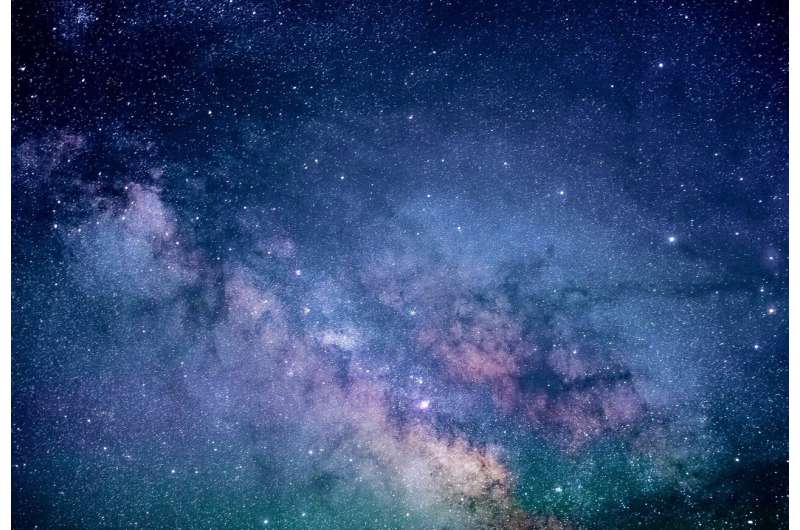Credit: CC0 Public Domain
Using NASA's Chandra X-ray Observatory, an international team of astronomers has conducted deep imaging observations of a high-redshift radio galaxy known as 4C 63.20. The observational campaign has revealed an extended X-ray emission from this source. The finding is reported in a paper published July 20 on the arXiv pre-print paper.
Radio galaxies emit huge amounts of radio waves from their central cores. Black holes at the centers of these galaxies accrete gas and dust, generating high-energy jets visible in radio wavelengths, which accelerate electrically charged particles to high velocities.
High-redshift radio galaxies (HzRGs), which are among the most massive galaxies at their redshift, are known to contain large amounts of dust and gas. HzRGs are often located at the center of clusters and proto-clusters of galaxies. They could provide insights into the assembly and evolution of large-scale structures in the universe.
At a redshift of approximately 4.261, 4C 63.20 is one of only few known HzRGs. It is also the only HzRG to have an associated, statistically significant X-ray counterpart at a redshift of above 4.0. Recently, a group of astronomers led by Kate Napier of the University of Michigan investigated this X-ray source using the Advanced CCD Imaging Spectrometer (ACIS), an X-ray imager aboard Chandra.
"In this paper, we report on deep observations of 4C 63.20 with the Chandra X-ray Observatory, aimed at testing the cosmic microwave background-quenching model by resolving its X-ray emission on sub-arcsec scales," the researchers wrote in the study.
Chandra observations show that the X-ray counterpart to 4C 63.20 is made of a compact core plus extended southeast-to-northwest emission. This extended X-ray emission accounts for about 30 percent of the flux and turned out be aligned with the radio hotspots of 4C 63.20 seen at 5.0 GHz. The astronomers noted that although the observed separation and centroid positions of the two X-ray sources point out to a diffuse, lobe-like nature, the scenario that they are two compact hotspots cannot be ruled out at the moment.
Trying to reproduce the spectral energy distribution (SED) of the 4C 63.20 system, the researchers found that it could be described by a jet model attributing the majority of the radio flux to synchrotron emission from the hotspots. When it comes to the X-ray emission, it can be produced via inverse Compton (IC) scattering off of disc, torus and cosmic microwave background (CMB) photons.
"This scenario is broadly consistent with the expectation from highly magnetized lobes in a hotter CMB, and supports the view that IC/CMB may quench less extreme radio lobes at high redshifts," the authors of the paper explained.
Summing up the results, the astronomers concluded that the case of 4C 63.20 shows that HzRGs are clearly not radio-quenched; however, X-ray luminosities of these sources are consistent with the expectation from highly magnetized lobes in a hotter CMB.
More information: Napier et al., Extended X-ray emission from the z=4.26 radio galaxy 4C 63.20, arXiv:2007.10368 [astro-ph.HE] arxiv.org/abs/2007.10368
© 2020 Science X Network
























